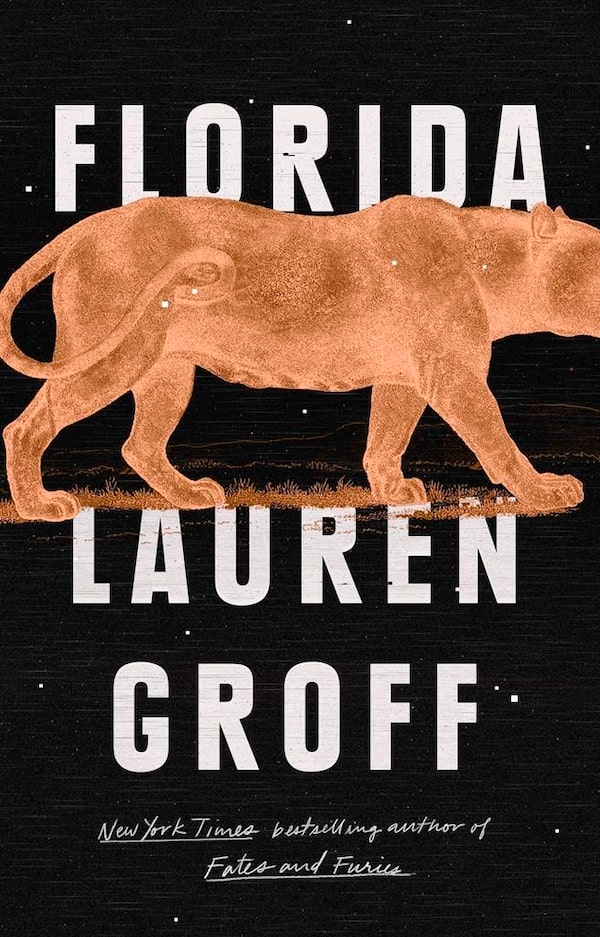- Florida
- By Lauren Groff
- Riverhead Books
- 288 pages
While Florida conjures many things, the literary imagination has not always been one of them. Two relatively recent, well-received Florida-based novels by young, female authors may help shift that perception: Karen Russell’s Swamplandia! (2011), and Lauren Groff’s Fates and Furies, which went gangbusters, especially after Barack Obama named it his favourite book of 2015. (Trump has yet to offer a similar endorsement, despite maintaining a pied-à-terre in the sunshine state.)
Lauren Groff.Megan Brown
All the stories in Groff’s new book and second collection, Florida, are either set in or connected to her adopted state (she moved to Gainesville almost a decade and a half ago), yet none peddles in stereotypes. Theme parks, golf courses, Miami Vice pastels and spring-break bacchanals all exist, but comfortably out of frame. Groff’s Florida is, instead, “an Eden of dangerous things” – a place of oppressive heat, sinkholes, insects, hurricanes, gators and other slithering, biting beasts, both wild and domestic; a drained swamp constantly threatening to refill itself.
Fates and Furies took a deep dive into marriage; in Florida, Groff’s prime focus is early parenthood. Several stories involve iterations of a similar character: a mother of two young boys with a functional marriage and a gnawing anxiety about imminent environmental catastrophe.
Vulnerability and the failure to protect are recurring themes. The mother in “The Midnight Zone” falls and hits her head while her husband is away from the remote hunting camp where they’ve been staying, leaving her terrifyingly dependent on their two young boys. “Dogs Go Wolf” offers a similar scenario, minus the parental presence. Here, two girls who’ve been through the foster system find themselves castaway on a storm-lashed island.
Children aren’t always in the mix. Both “Eyewall” and “Salvador” involve a woman trying to weather a storm; in the latter, set in Brazil, she does so trapped in a store, where she has to fend off its lecherous owner.
Sudden, ominous weather events are, you may have gathered, a recurring motif, as are electrical blackouts, comfort through storytelling and snakes. These are in fact used so often that the stories can blend together. The word “pale” appears with bewildering frequency.

This cover image released by Riverhead Books shows "Florida" by Lauren Groff. (Riverhead Books via AP)The Canadian Press
As with Fates, Groff often dips a toe into the uncanny. This yields her mixed results. When the mother from “The Midnight Zone” metamorphoses into a panther, my sense of surprise came from the seeming randomness of it. That, presumably, is not the effect Groff was aiming for, but in the context of her often elegant but structurally conventional writing, what’s meant to unsettle can come off like a game of narrative dress-up.
Which is to say that peril, in the stories as a whole, is always explored from what feels like a position of safety. We never really worry about the young graduate student in “Above and Below,” who, through a pileup of circumstance, finds herself on the economic fringes, at one point spending a night among the homeless in a tent city. When she dumpster-dives while bemoaning the loss of her Baudelaire and Shakespeare, however, it’s hard not to see that cultural capital as actual capital. And indeed, a flash-forward assures us that everything turns out okay.
In the longest and last story, “Yport,” a woman takes her young boys to France, intending to teach them some French and finish some research on Guy de Maupassant. As she drags them around Maupassant’s various haunts, however, she comes to the deflating realization that she actually detests the author. “Yport” has all Groff’s strengths and weaknesses on mutual display: the dislocations of parenthood and foreign travel are brought compellingly to life, and Groff finds bitter humour in her character’s disillusionment, yet the built intimacy is undercut by a few shaky details, as well as by Groff’s decision to refer to character, stiltedly, as “the mother” (or just “she”), instead of by name. Why strive for mythic when the mundane will do?
Imagery, typically Groff’s strong suit, can be overengineered, as with a wind that “riffed through my books one by one as if searching for marginalia,” or a tortured line like “The skin of her face was silk that had been clenched in a hand.”
Groff does a nice job paralleling her characters’ vulnerability in Florida itself: a place largely created by human hands shows signs of coming undone, paradoxically, through human-created climate change. Groff is at her best when transmitting this through simple gestures and phrases. The woman in the opening story, “Ghosts and Empties,” who uses nightly walks through her neighbourhood to slough off motherhood’s daily demands, for instance, is at one point startled by an unusual sound, which she quickly recognizes as the first air conditioners of the season: “Soon they’ll all be on,” she thinks, “crouched like trolls under the windows, their collective tuneless hum drowning out the night birds and frogs …”
Those who like their fiction served with a side of optimism needn’t worry: Groff consistently skews hers toward redemption. More than one story ends with a fertility symbol, that perennial hope-conveyer. Where we expect, and might actually prefer, to find darkness, Groff consistently gives us light. Blame that Florida sunshine.
Emily Donaldson is the editor of Canadian Notes & Queries